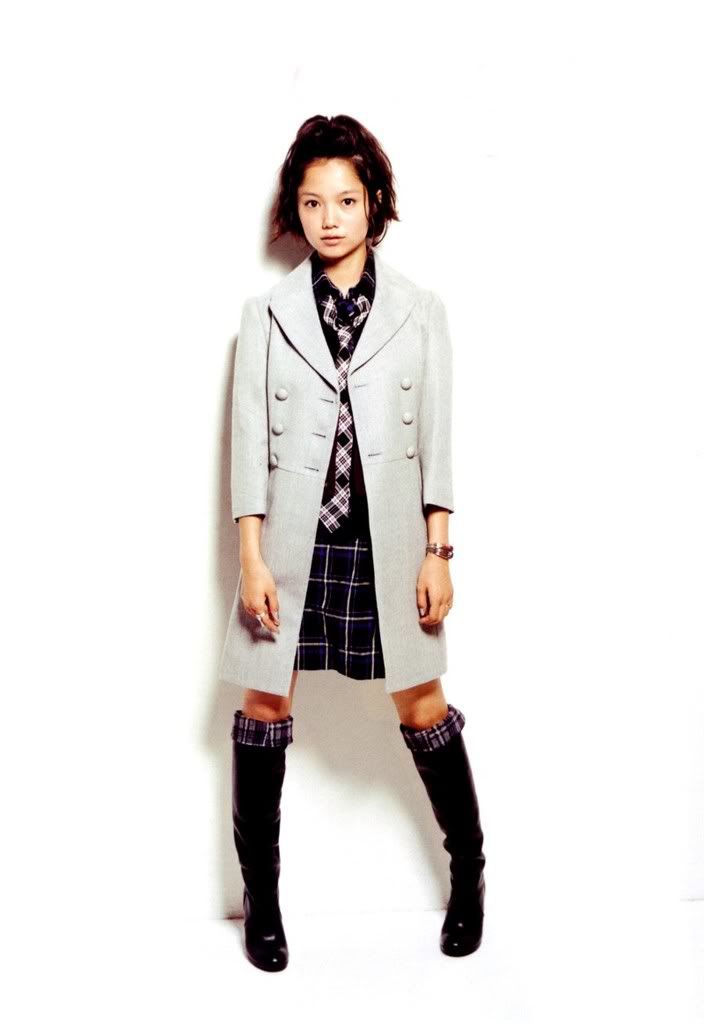
On January 22, 1947, the first commercial television station west of the Mississippi River, KTLA, began operating in Hollywood. In December of that year, The Public Prosecutor became the first network television series to be filmed in Hollywood. And in the 1950s, music recording studios and offices began moving into Hollywood. Other businesses, however, continued to migrate to different parts of the Los Angeles area, primarily to Burbank. Much of the movie industry remained in Hollywood, although the district's outward appearance changed.
In 1952, CBS built CBS Television City on the corner of Fairfax Avenue and Beverly Boulevard, on the former site of Gilmore Stadium. CBS's expansion into the Fairfax District pushed the unofficial boundary of Hollywood further south than it had been. CBS's slogan for the shows taped there was "From Television City in Hollywood..."
During the early 1950s the famous Hollywood Freeway was constructed from Four Level Interchange interchange in downtown Los Angeles, past the Hollywood Bowl, up through Cahuenga Pass and into the San Fernando Valley. In the early days, streetcars ran up through the pass, on rails running along the central reservation
The famous Capitol Records building on Vine St. just north of Hollywood Boulevard was built in 1956. The building houses offices and recording studios which are not open to the public, but its circular design looks like a stack of 7-inch (180 mm) vinyl records.
The now derelict lot at the corner of Hollywood Boulevard and Serrano Avenue was once the site of the illustrious Hollywood Professional School, whose alumni reads like a Hollywood Who's Who of household "names". Many of these former child stars attended a "farewell" party at the commemorative sealing of a time capsule buried on the lot.
The Hollywood Walk of Fame was created in 1958 and the first star was placed in 1960 as a tribute to artists working in the entertainment industry. Honorees receive a star based on career and lifetime achievements in motion pictures, live theatre, radio, television, and or music, as well as their charitable and civic contributions.
In 1985, the Hollywood Boulevard Commercial and Entertainment District was officially listed in the National Register of Historic Places protecting important buildings and ensuring that the significance of Hollywood's past would always be a part of its future.
In June 1999, the long-awaited Hollywood extension of the Los Angeles County Metro Rail Red Line subway opened, running from Downtown Los Angeles to the Valley, with stops along Hollywood Boulevard at Western Avenue, Vine Street and Highland Avenue.
The Kodak Theatre.
The Kodak Theatre, which opened in 2001 on Hollywood Boulevard at Highland Avenue, where the historic Hollywood Hotel once stood, has become the new home of the Oscars.
While motion picture production still occurs within the Hollywood district, most major studios are actually located elsewhere in the Los Angeles region. Paramount Pictures is the only major studio still physically located within Hollywood. Other studios in the district include the aforementioned Jim Henson (formerly Chaplin) Studios, Sunset Gower Studios, and Raleigh Studios.
While Hollywood and the adjacent neighborhood of Los Feliz served as the initial homes for all of the early television stations in the Los Angeles market, most have now relocated to other locations within the metropolitan area. KNBC began this exodus in 1962, when it moved from the former NBC Radio City Studios located at the northeast corner of Sunset Boulevard and Vine Street to NBC Studios in Burbank. KTTV pulled up stakes in 1996 from its former home at Metromedia Square in the 5700 block of Sunset Boulevard to relocate to Bundy Drive in West Los Angeles. KABC-TV moved from its original location at ABC Television Center (now branded The Prospect Studios) just east of Hollywood to Glendale in 2000, though the Los Angeles bureau of ABC News still resides at Prospect. After being purchased by 20th Century Fox in 2001, KCOP left its former home in the 900 block of North La Brea Avenue to join KTTV on the Fox lot. The CBS Corporation-owned duopoly of KCBS-TV and KCAL-TV moved from its longtime home at CBS Columbia Square in the 6100 block of Sunset Boulevard to a new facility at CBS Studio Center in Studio City. KTLA, located in the 5800 block of Sunset Boulevard, and KCET, in the 4400 block of Sunset Boulevard, are the last broadcasters (television or radio) with Hollywood addresses.
Additionally, Hollywood once served as the home of nearly every radio station in Los Angeles, all of which have now moved into other communities. KNX was the last station to broadcast from Hollywood, when it left CBS Columbia Square for a studio in the Miracle Mile in 2005.
In 2002, a number of Hollywood citizens began a campaign for the district to secede from Los Angeles and become, as it had been a century earlier, its own incorporated municipality. Secession supporters argued that the needs of their community were being ignored by the leaders of Los Angeles. In June of that year, the Los Angeles County Board of Supervisors placed secession referendums for both, Hollywood and the San Fernando Valley, on the ballots for a "citywide election." To pass, they required the approval of a majority of voters in the proposed new municipality as well as a majority of voters in all of Los Angeles. In the November election, both referendums failed by wide margins in the citywide vote.
Hollywood is served by several neighborhood councils, including the Hollywood United Neighborhood Council (HUNC) and the Hollywood Studio District Neighborhood Council. These two groups are part of the network of neighborhood councils certified by the City of Los Angeles Department of Neighborhood Empowerment, or DONE. Neighborhood Councils cast advisory votes on such issues as zoning, planning, and other community issues. The council members are voted in by stakeholders, generally defined as anyone living, working, owning property, or belonging to an organization within the boundaries of the council

























 The first fashion designer who was not merely a dressmaker was Charles Frederick Worth (1826-1895.) Before the former draper set up his couture fashion house in Paris, fashion creation and inspiration was handled by largely unknown people, and high fashion descended from style worn at royal courts.
The first fashion designer who was not merely a dressmaker was Charles Frederick Worth (1826-1895.) Before the former draper set up his couture fashion house in Paris, fashion creation and inspiration was handled by largely unknown people, and high fashion descended from style worn at royal courts.








 American Beauty:
American Beauty: American Pie:
American Pie: Blair Witch Project:
Blair Witch Project: Dogma:
Dogma: Eyes Wide Shut:
Eyes Wide Shut: The Green Mile:
The Green Mile: Man on the Moon:
Man on the Moon: The Muse:
The Muse: The Sixth Sense:
The Sixth Sense: Stir of Echoes:
Stir of Echoes: Summer of Sam:
Summer of Sam:
![[76.jpg]](https://blogger.googleusercontent.com/img/b/R29vZ2xl/AVvXsEigJw5p8CEzJk9-FyfOjZpAE46Mizhsc7vjzZu02jSnVd1eMrCLHNseinJGW91VdACRnyXRaZLwdP8VO-es8CVC2tEbYp9KWsG23g0A0DFFyFZz8lH8odhVh1iPt3wuARM0Hl_hVLFdV_s/s1600/76.jpg)

